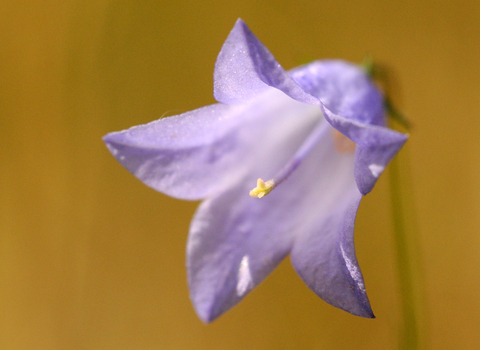
©Bruce Shortland

©Amy Lewis
Harebell
The nodding, blue bells of the harebell are a summer delight of grasslands, sand dunes, hedgerows and cliffs. They are attractive to all kinds of insects, too.
Scientific name
Campanula rotundifoliaWhen to see
June to OctoberSpecies information
About
The delicate, nodding bells of the harebell are one of the prettiest additions to our hedgerows, grasslands, hillsides, sand dunes and cliffs. Flowering between July and September, the harebell mostly grows on dry, undisturbed ground, but is tolerant of all kinds of habitats. It is regularly visited by bumblebees and honeybees, providing an autumnal source of nectar for these insects.How to identify
A creeping perennial, the harebell has long, trailing stems with small, club-shaped leaves at the base. Its stem leaves are much more elongated, and its blue, bell-shaped flowers hang in clusters at the tips of the stems.Distribution
Found throughout mainland UK, but scarcer in Northern Ireland.Did you know?
In Scotland, the harebell is sometimes known as the 'bluebell'; elsewhere, it has picked up various local names, including 'witches' thimbles' and 'fairy bells', alluding to magical associations.The Wildlife Trusts manage many grassland and coastal habitats sympathetically for the benefit of all kinds of wildlife. Careful grazing with traditional breeds, hay-cutting at the right time and scrub clearance are just some of the ways these habitats are kept in good condition.
